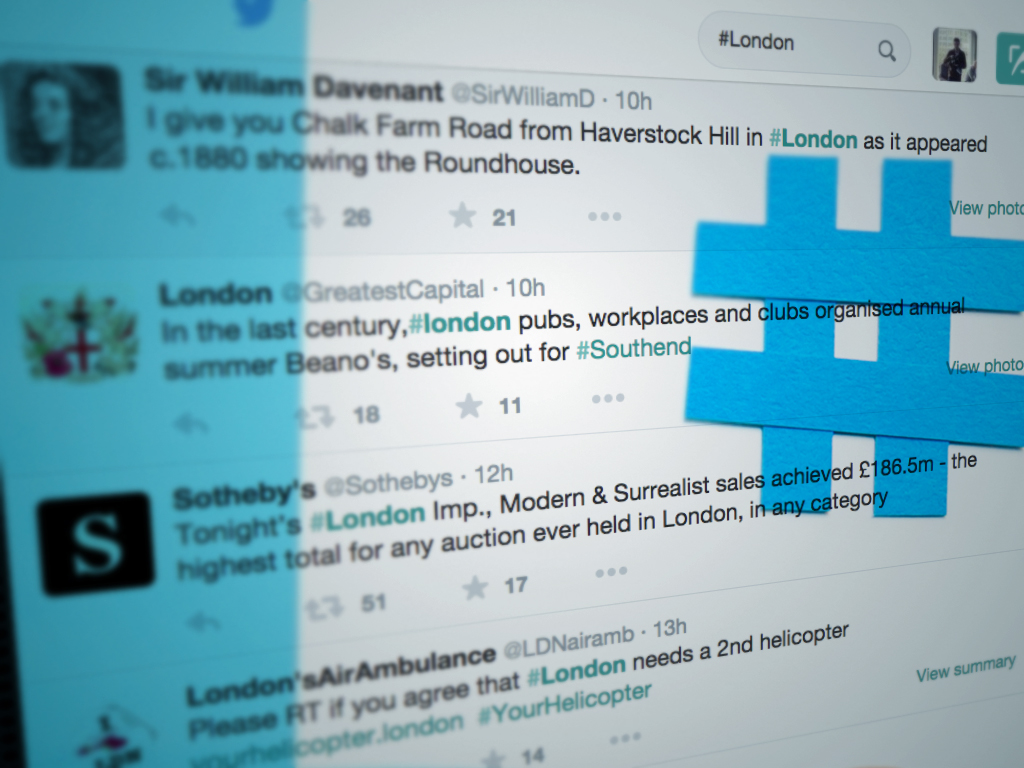The #IceBucketChallenge, #BreakTheInternet and #LoveWins are perfect examples: Whenever a popular hashtag emerges, brands can’t help but dogpile. The recent #ILookLikeAnEngineer hashtag is no exception.
#ILookLikeAnEngineer, however, also demonstrates the formula for brand success with viral hashtags = Relevance + Genuine Sentiment + Hot (Possibly Cause-Based) Topic.
Here’s how.
The Rise Of A Viral Hashtag
When platform engineer Isis Wenger appeared in a recruiting campaign for her employer, OneLogin, a San Francisco-based provider of single sign-on and identity management for cloud-based applications, the public response illustrated what she described as the sexism that plagues the tech industry. As a result, she put out a call to action to redefine what an engineer should look like with the hashtag #ILookLikeAnEngineer.
The subsequent response generated 91,000 mentions in a single week according to Topsy, including posts from brands like GE, Tesla, Fujitsu and GlaxoSmithKline.
Meet Erika, an Engineer for @GE_EnergyMgmt. #ILookLikeAnEngineer pic.twitter.com/hC4g6cwf76
— General Electric (@generalelectric) August 5, 2015
We build cars #ILookLikeAnEngineer pic.twitter.com/hyYCRvzQxc — Tesla Motors (@TeslaMotors) August 12, 2015
This engineer is a new mom! #ILookLikeAnEngineer pic.twitter.com/af8cYivXGd
— Fujitsu FNC (@FujitsuFNC) August 6, 2015
We ? Conchita, a PhD and manufacturing engineer, for breaking down stereotypes #ilooklikeanengineer pic.twitter.com/j4znGMI63Y — GSK US (@GSKUS) August 6, 2015
It also inspired a photo generator and an Indiegogo campaign to “put up at least one billboard in San Francisco.”
How To Newsjack A Hashtag Without Even Trying
According to James Li, CEO of Encore Alert, a machine intelligence platform for marketing insights, much of the brand engagement was effective and genuine in this campaign, such as Amazon CTO Werner Vogels’ tweets about computer scientist and Navy Real Admiral Grace Hopper and Wenger, which had between 15 and 20 times the engagement his tweets normally do.
Admiral Grace Hopper will forever be an engineering superstar to all of us engineers. #ILookLikeAnEngineer pic.twitter.com/mute8G3tcC
— Werner Vogels (@Werner) August 4, 2015
Further, in a study of how brands newsjack trending hashtags like #ILookLikeAnEngineer, Li said Encore Alert found the brands that knock it out of the park – with +278 percent engagement on average – “are the ones who genuinely understand what the hashtag is about and are able to participate in a super brand-relevant way.”
Otherwise, the companies that try to tag along actually lose engagement on their tweets – or, worse, get embarrassed, like DiGiorno Pizza did with the #WhyIStayed hashtag, which was meant to encourage conversation about domestic violence, he said.
What’s more, Li said the brands that posted about #ILookLikeAnEngineer showed a pretty good handle of the origins of the trend and mostly chimed in with true employee stories and genuine sentiments, such as referencing Hopper and other engineering heroes.
A Hot Topic
Women in science and technology is certainly buzzworthy as of late.
According to David Justus, managing director of Crossbeat, which calls itself an innovation agency and creative studio, the campaign strikes at a real problem in the computer science and engineering fields in which research shows far fewer female high school students say they intend to pursue science, technology, engineering and mathematics, or STEM, degrees than their male colleagues.
In addition, Joseph Nagle, director of marketing at EverCharge.net, which provides electric vehicle charging for residents of multi-tenant buildings, points to controversial comments from the likes of Microsoft CEO Satya Nadella, whose initial advice to women at the Grace Hopper Celebration of Women in Computing last year was to not ask for raises, but rather have faith in the system.
(Nadella later wrote that he “answered that question completely wrong.”)
The faux pas, however, drew attention to the pay gap, which has received additional attention in light of the upcoming redesign of the $10 bill and the victorious U.S. women’s World Cup team, which earned $2 million, or $33 million shy of their male counterparts.
There’s also Nobel Prize winner Sir Tim Hunt, who resigned from his position as Honorary Professor with the University College London Faculty of Life Sciences in June after he reportedly said women fall in love with men when they work together in the lab and cry when criticized.
In addition, toy brands like Project MC2 and Goldieblox are targeting girls with products intended to develop an early interest in fields like science and engineering.
Also, small business tech provider GoDaddy recently helped produce a documentary about women in tech to further pivot itself away from babevertising and embrace a new era of supporting small business owners in general and female business owners specifically. The brand also made a compensation parity pledge at a recent White House event.
So what can marketers take away from this moment?
There are five points, actually.
1. Hashtags (And Twitter) Are Still Relevant
When the number of hashtags dropped to 50 percent in the Super Bowl this year, some wondered whether it was a sign the brand hashtag was dying.
But, according to Amy Vernon, co-founder of content prediction platform Predictable.ly, hashtags have never been irrelevant.
“The problem is that most brands try to create their own hashtags and then wonder why they don’t work, instead of finding the relevant hashtags and joining in the conversation,” Vernon said.
Brands need to do their research and honestly engage in conversations, she said.
Rasheen Carbin, CMO of job search app nspHire, agrees hashtags have to tap into the zeitgeist rather than use self-serving corporate-speak.
But Nagle said the big takeaway is really how relevant Twitter still is.
“In recent months they have been hit hard with a rotating door or executives, a real lack of monetization and stagnating user growth,” Nagle said. “However, this proves that Twitter is not only heavily used, but still incredibly socially relevant and very insightful for monitoring trends within any industry, not just tech.”
2. Authenticity Remains The Holy Grail
Vernon also noted the campaign struck a chord because the sentiment behind the campaign was genuine.
“It was an opportunity to publicly show a different face for engineers,” Vernon said. “The women from these brands who posted photos didn’t do so because their brands were jumping on a buzzy hashtag…this was an opportunity for people to lay a stereotype bare.”
Samuel Scott, director of marketing and communications at log analytics software company Logz.io, agreed.
“Marketing and PR is always about finding a message that will resonate with a target audience and then communicating that message to that audience through the communications channels that the audience uses,” Scott said. “A significant number of women at tech companies…think that they are invisible in a male-dominated environment. So, such a campaign – especially on Twitter, which they use – would naturally appeal to them.”
3. Causes Increase Appeal
Justus said the key to social campaigns (and hashtags) is to include something culturally relevant and that taps into the social consciousness, which is why campaigns like the #IceBucketChallenge or Under Armour’s #IWillWhatIWant work.
Indeed, as Under Armour demonstrates, cause-based hashtags don’t necessarily need to be independent. Other brands, like Dove and its #RealBeauty Sketches, as well as Always’ #LikeAGirl, have also struck chords, said Jessica Steele, founder of marketing services agency Steele Social Media.
“One of the great values of social media is the feeling of connection. It’s so very basic, yet, as marketers we often overlook the simple human desire to feel part of something. Marketing and advertising experts, or even the casual purveyor of Mad Men, understand the most successful sales campaigns don’t promote a brand – they promote a feeling,” Steele said. “Perhaps this is why some of the largest viral social media campaigns have promoted humanitarian causes along with lifting the underdogs or minorities – many times, women.”
However, for his part, Cameron Conaway, content marketing manager at task management software firm Flow, said the #ILookLikeAnEngineer campaign shows content marketing is best when it’s unbranded. However, like Steele and Justus, he agrees content marketing works well when it can empower the audience to dismantle pain points and feel a sense of solidarity.
4. User-Generated Content = Power
#ILookLikeAnEngineer also illustrates the power of user-generated content to achieve a specific goal.
Once again, Steele points to the #IceBucketChallenge and said the #ILookLikeAnEngineer promotes user-generated content in a way that allows individuals to literally put themselves within the larger cause by uploading and sharing a picture or video of themselves.
“Just as this is both self-serving and generous at the same moment, I don’t believe brands jumping into the mix is an entirely self-serving action,” Steele said. “Yes, you gain brand exposure, but we see the natural inclination to both add authenticity and humanity to a business that emanates from the workforce themselves.”
5. Make It Easy
But beyond being topical, Bobbie Carlton, founder of Innovation Women, an online speakers bureau for entrepreneurial and technical women, noted the barrier to entry was low and the campaign had a clear call to action.
“There is no cost, it is a task easily accomplished and it carries with it the satisfaction of sticking up for a person who was unfairly attacked,” she said. “Outrage is a terrific motivator and in this case it is tinged with a sense of satisfaction and pride, too.”
What’s your best advice for using viral hashtags?


